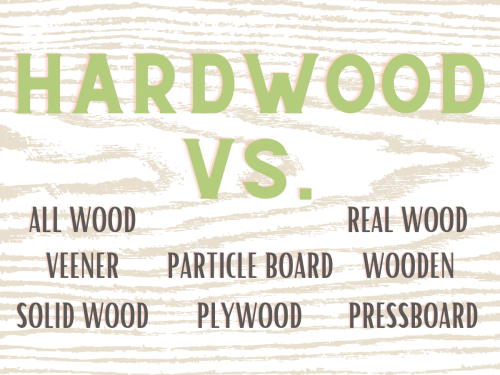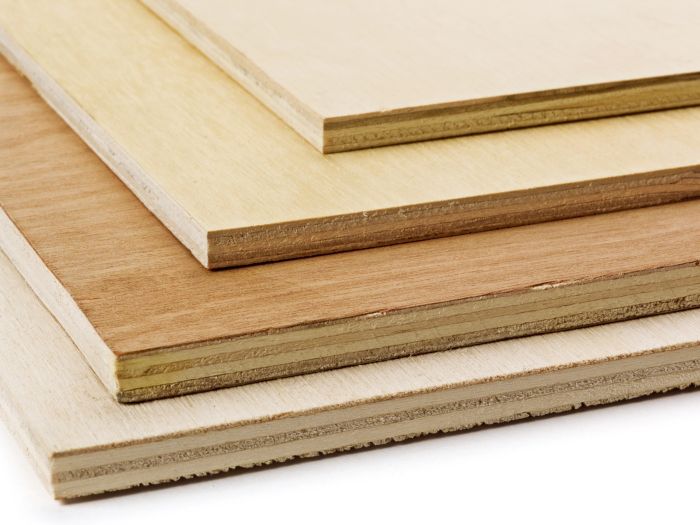What Really Goes into Countryside’s Furniture Construction?
By Bailiegh Basham · September 20, 2021
Common "Wood" Terms Defined
Solid wood, Amiah-made furniture is often times compared to lesser options including veener and plywood. When compared side-by-side, there are many benefits to choosing our solid wood furniture over other types of wood alternatives. As you begin your search for heirloom furniture, it is important to understand the definition of terms that are often mistakenly used interchangeably. A buyer's guide to wood terminology is provided here based on industry standard definitions.
Veneer
It’s pretty clear where we at Countryside stand on the issue of solid wood furniture vs. veneer; after all, we're in the business of handcrafting solid wood Amish furniture. Therefore, we do not use veneers in our Amish handcrafted furniture. A veneer is a very thin, almost pencil shaving thin, layer of real wood that has been applied to another material. In furniture, this is often a less expensive wood product like plywood, press board or particle board.
Unlike with Countryside’s solid hardwood furniture, you may encounter some of these potential problems with veneer furniture:
- Scratches and dents easily, so you’ll need to be a bit more careful with this furniture than you would with solid wood, and avoid placing it in high-traffic areas and kid's rooms.
- Over time, the veneer layer may start peeling. It can’t be repaired, refinished, or restored like solid hardwood furniture can.
- Veneer is also more likely to absorb moisture than solid wood furniture.
To learn more, read our guide, Wood Veneer vs. Solid Wood Furniture.
Pressboard
Pressboard is "engineered" from sawdust, wood chips, and shavings using a resin material. Pre-fabricated, do-it-yourself furniture is frequently made of this inferior wood product. None of our fine furniture includes pressboard. It disintegrates if wet and does not respond well to being moved or used for long periods of time. Engineered wood is easier to damage, and scratches and water stains cannot be repaired. On the contrary, solid wood's major advantage is that it can be sanded and refinished many times over the course of its lifespan.
Plywood
This material consists of stacks of veneers or thin layers of wood that are rotated and pressed together with glue to create a semi-strong, lightweight material. Though the components of plywood came from trees, we do not recommend purchasing furniture made entirely of plywood. If significant moisture seeps into the layers of this material, it can cause dramatic expansion and often the complete dissolution of the item in question. On occasion, here at Countryside, hutch backs and drawer bottoms are made from a sealed, formaldehyde-free plywood for the purposes of reducing the weight of a very heavy piece of furniture and also where the use of solid wood can create functional problems due to the normal expansion and contraction of solid wood, from climate fluctuations, such as temperature and humidity. When this is the case, the product is still finished with the rest of the piece to match.
Solid wood vs. plywood furniture: There is also no mistaking the fact that if you are going for style and aesthetic beauty, plywood can’t hold a candle up to solid wood. Solid hardwood furniture features naturally beautiful wood grains and patterns, whereas it may cost more to add decorative laminates on top of plywood. Not to mention, plywood is made of sheets that have been artificially glued together, and it is possible for the individual plies to bed or come apart (depending on the quality of the plywood). Solid wood is stronger since it is a homogeneous material.

Particle Board
Think of particle board as the intermediate material between plywood and pressboard. It is often used in sub-flooring and other building projects where a lightweight, semi-sturdy material is necessary. Again, Countryside wants no part of this building material. It is inferior for furniture making and does not meet our standards for quality and durability.
When it comes to solid wood furniture vs particle board, there is truly no comparison. Solid wood is naturally strong and stands up to modifications, whereas particle board may fall apart if it is drilled or sawed. If the particle board gets wet, it absorbs the water and expands to several times its original size. Once water damage occurs, the particle board is not repairable. While particle board can last a few years at best, solid woods lasts generations.
Wooden
We use this term at Countryside, but it is quite broad. By definition, to be "wooden" is merely to be made of wood or timber. All the aforementioned materials technically fit this definition. Our furniture is wooden, but it is much, much more.
All vs. Real vs. Solid Wood
Interpreted loosely, the term "All Wood" may lead a buyer to believe that the furniture they are investigating is made entirely of wood. Although it may be true that all surfaces are wood, sides, backs and bottoms may not be. Technically, by this definition, calling a pre-fabricated item that is plywood everywhere except the top surface "all wood" is not false advertising. This definition is far too easy to bend to the whim of the furniture sales person in question, so be wary of this terminology. All of Countryside's furniture is all wood, but we prefer a different, more specific, term to indicate the absolute quality of our furnishings.
Another common term in the furniture industry is "real wood". Buyer beware! When you hear "real wood" thrown around, you may not be in the presence of fine furniture. Real wood simply means that the furniture in front of you was once part of a tree. A lot of building materials fit this definition, but again, this is not the premium hardwood you will find at Countryside. You will, accurately, note this term on our website, but it is not technically the best description of our predominate building material.
"Solid wood" - now we are getting closer to Countryside's preferred term. Solid wood implies that the furniture you are seeing is actually made from boards cut directly from a tree without any further processing required. All of our fine furniture is solid wood. This does not mean, however, that the occasional table pedestal will not be hollow. This allows the table, in total, to weigh less and is often more practical and preferrable. The wood to make the pedestal, however, will be solid wood and not a plywood, press board, or veneer.
Hardwood
Solid hardwood, to be precise, is the most specific and correct term for the building material used in our fine, handmade Amish furniture at Countryside. We use only solid wood from trees with a Janka designation of 1290 or harder.
Popular hardwood species utilized at Countryside Amish Furniture include Red Oak, Quartersawn White Oak, Brown Maple, Maple, Cherry, Elm, Walnut, Tiger Maple, or Hickory. We also now offer many rough sawn, reclaimed, and salvaged hardwood options. In many cases, both the pristine and rustic varieties of these woods are available. In rustic selections, knots and scars will not be cut from the timber leaving the raw, natural character of the wood intact. Live edge offerings also incorporate the natural bark-off edge of the tree for an even more rustic presentation. Finally, all of our raw lumber is harvested in the USA responsibly to ensure our forests are properly renewed.
Benefits of Hardwood:
- Natural beauty and character. Retains its value over the years.
- Durable and holds up to regular, daily use. Long-lasting through generations.
- Versatile for many different interior design styles in your home or business.
- Potential to be restored should it start to show signs of dings or minor wear.
- It's easy to maintain. Cleaning wood is usually as simple as regularly dusting.
- Natural wood construction - is not full of processed materials that may be found in veneer or laminate furniture.
- When responsibly sourced and certified, wood represents an excellent option for sustainability

